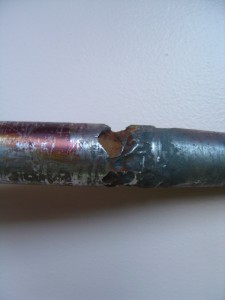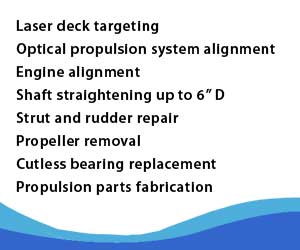Electrolysis or Stray Current Corrosion?
In a prior post “Electrolysis Destroys a Shaft” we cover a story about a 50′ sailboat that almost lost their Maxprop due to a severely damaged shaft. They were very lucky to haul for routine bottom paint when they did – a few more months and the prop would be gone.
“The entry on shaft electrolysis caught my attention. Electrolysis is a word the marine corrosion community frowns upon, primarily because it references a chemical reaction rather than carrion per se. The photo of the damaged shaft is likely a result of stray current corrosion rarer than galvanic corrosion, which anodes would prevent. No amount of anodic (zinc or otherwise) protection will contend with stray current corrosion for anything more than a short time. Stray current corrosion results from DC current leaking into bilge water or via an un-bonded through hull. It typically causes significant damage in a very short period of time, as opposed to galvanic corrosion, this is the kind that is mitigated by anodes, which occurs slowly. Both are easily identified using a multi-meter, although not always easy to resolve. “
Sincerely,
Steve D’Antonio
Steve D’Antonio Marine Consulting, Inc.
www.stevedmarineconsulting.com/
I will gladly take feedback anytime from a known expert and update the site in an effort to be accurate and educational. Thanks Steve!



 Click to watch the video of a day at High Seas Yacht Service.
Click to watch the video of a day at High Seas Yacht Service. Click to watch Marine Industries Association of South Florida video featuring Salty Jobs at High Seas Services.
Click to watch Marine Industries Association of South Florida video featuring Salty Jobs at High Seas Services.